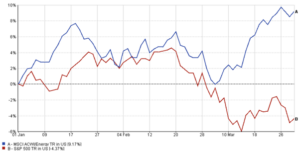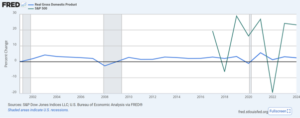The dollar was up to a two-week high against the euro and approached a one-month high against the Japanese yen on Monday, reflecting a dramatic shift in currency market positions amid speculation about the U.S. Federal Reserve tightening monetary policy.
The dollar reached its highest against the yen since Aug. 21, boosted by a recent gain in long-term Treasury yields, which rose to their highest since mid-August. The rise in yields came after the release of a key inflation measure showed prices remained flat and reduced expectations of a steep 50 basis-point cut in interest rates by the Fed on Sept. 18.
The dollar rose as high as 0.27% to 146.60 yen and steadied at 146.29. The dollar index-which measures the greenback against a basket of major currencies-climbed toward 101.79-the highest since August 20. Elsewhere, the euro slipped slightly to $1.10430-the lowest since August 19.
Clearly, market sentiment has dramatically changed over the past few weeks. Fed funds futures are now pricing in a 33% chance of a 50-bps rate cut by the Fed this month, from 36% previously. This means that there is a 67% chance the US central bank would instead cut rates by a quarter-point. Pretty much, the Fed's move is now dependent on upcoming economic data, not least the key non-farm payrolls report at the end of the week.
The dollar got further bolstered by the economic data on Friday. The personal consumption expenditures price index, the big measure of inflation, increased 0.2% in July, a reading in line with expectations, from a 0.1% climb in June. Its annual rise remained the same at 2.5%. In addition, consumer spending jumped 0.5% from 0.3% in the prior month.
The dollar shot up 0.8% to 146.09 yen in reaction to the inflation data, the biggest rise in two weeks. It was up 1.2% for the week so far, on track for its biggest weekly advance since mid-June. That still leaves the dollar down 2.6% so far in August versus the yen, following a second month of losses against the Japanese currency.
The dollar index, which gauges the dollar's value against six major currencies, reached a 10-day high, up 0.3% at 101.7. This week it has gained 1%, the best run for the dollar since early April, but so far this month, it is down 2.6%, its worst in November 2023.
Month-end financial flows also influenced the dollar's moves. The greenback had fallen under selling pressure after Fed Chair Jerome Powell suggested last week at the Jackson Hole symposium that the central bank could cut rates in September. However, the recent gain in the dollar suggests a revision in market expectations.
The University of Michigan's consumer sentiment complicated things even more for the dollar. It increased to 67.9 in August from July's eight-month low of 66.4, breaking a four-month decline. Consumers' expectations of softer inflation helped lift the gauge, though the dollar pared gains briefly after the report.
The euro was down 0.2% against the dollar at $1.1050 in European markets. It's headed for a 1.3% weekly drop, the biggest since April. The euro rose 2.1% in August for its best month since November 2023, partly on hopes for more aggressive rate cuts from the ECB. On Tuesday, German inflation data cooled more than expected, again fueling speculation of the ECB adjusting its policy.
Meanwhile, across the Pacific, the Chinese yuan surged to its highest level in 14 months against the dollar. The currency rose to as much as 7.0825 per dollar and steadied at 7.0920, up about 1.9% for the month of August. It has gained ground based on higher demand from companies and revised expectations regarding the timing of the rate hikes in the United States.
As the week wears on, all eyes will turn to the U.S. jobs report and further economic data that may influence Fed policy. The currency markets will likely continue to be volatile, with shifting expectations and economic indicators leading global financial conditions and investment strategies.





